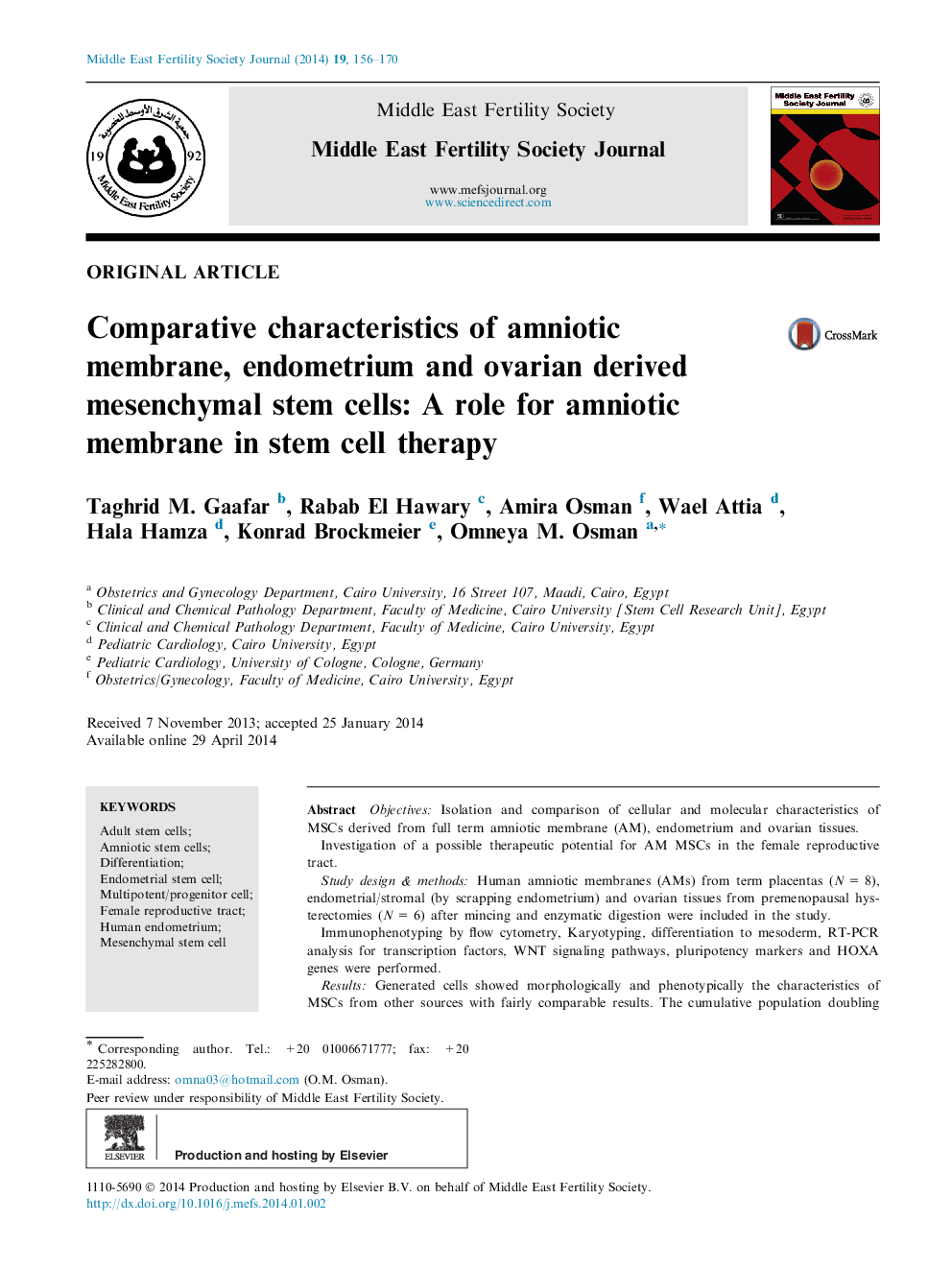| Article ID | Journal | Published Year | Pages | File Type |
|---|---|---|---|---|
| 3966139 | Middle East Fertility Society Journal | 2014 | 15 Pages |
ObjectivesIsolation and comparison of cellular and molecular characteristics of MSCs derived from full term amniotic membrane (AM), endometrium and ovarian tissues.Investigation of a possible therapeutic potential for AM MSCs in the female reproductive tract.Study design & methodsHuman amniotic membranes (AMs) from term placentas (N = 8), endometrial/stromal (by scrapping endometrium) and ovarian tissues from premenopausal hysterectomies (N = 6) after mincing and enzymatic digestion were included in the study.Immunophenotyping by flow cytometry, Karyotyping, differentiation to mesoderm, RT-PCR analysis for transcription factors, WNT signaling pathways, pluripotency markers and HOXA genes were performed.ResultsGenerated cells showed morphologically and phenotypically the characteristics of MSCs from other sources with fairly comparable results. The cumulative population doubling was significantly higher in endometrium MSCs 25 ± 5.2 compared to 17.2 ± 4.5 for AM MSCs and 10.7 ± 2.4 for ovarian MSCs (P < 0.001). They differentiated into osteogenic, adipogenic and chondrogenic lineages till passage 9. They all possessed normal karyotype by passage 6. They all expressed HOXA genes and differentially pleuripotency markers.Intrauterine injection of GFP transfected AM MSCs into female Wistar rats (N = 10), demonstrated the presence of AM cells with GFP expression after 14 days within several mice uterine and ovarian cryosections. AM MSCs highly expressed genes involved in patterning of the female reproductive tract.ConclusionsAM, endometrium and ovarian derived MSCs share fairly similar morphological, cellular and molecular characteristics. They possess mesenchymal stemmness potentials and endometrial MSCs possess the highest expansion capacity. AM MSCs may have a potential for stem cell therapy in the female reproductive tract.
